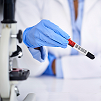Learning Outcomes:
- Describe the incidence and clinical findings of a patient with rheumatoid arthritis (RA).
- List the criteria for diagnosis recommended by the American Rheumatism Society.
- Describe briefly the pathogenesis and pathology of rheumatoid arthritis.
- Outline the hematological features of rheumatoid arthritis in terms of defective iron metabolism and anemia of chronic disease.
- Describe the notion of inflammation in RA patients as a cardiac risk factor.
- Describe the role of genetics in RA.
- Discuss the use of tests for detecting the presence of inflammation in a patient. These tests would include the ESR and CRP in more detail.
- Outline the value of measuring acute phase reactant proteins for inflammation.
- Describe the normal findings seen in the laboratory evaluation of joint fluid.
- List the changes anticipated in the joint fluid from a RA patient.
- Outline the role of rheumatoid factor in the etiology of RA.
- Describe the concept of an antibody to human IgG as seen with rheumatoid factor.
- Explain how the presence of RF in a serum will affect immunological tests in the laboratory.
- List and include the relative diagnostic value of the many rheumatoid arthritis-associated antibodies.
- Explain the role of cytokines in the RA disease process.
- Present the concept of the hierarchy of cytokine expression
- Discuss the importance of making a rapid and accurate diagnosis in those patients that present with symptoms consistent with early rheumatoid arthritis.
- Explain the logic used in establishing the appropriate treatment protocols for patients with rheumatoid arthritis.
- Describe the differences between the two classes of drugs termed NSAIDS and DMARDS.
- Review briefly the newer treatment options using recombinant technology.
- Calculate test sensitivity, specificity, PPV and PNV when data is provided from laboratory or clinical trials.
- Discuss the interpretation of the Rheumatoid factor test in terms of its PPV and PNV.
Author: John Chapman, FCSMLS, FIMLS, CLSp(H)
Version Date: March 2015
PEP hours: 16
CPS credits: 0
*Note: PEP hours and/or CPS credits will only be awarded upon successful completion of Final Exam.
Learner Feedback
Great course, well-written and organized. Definitely learned a significant amount about this autoimmune disorder and expanded my understanding further than "Rheumatoid Factor is the diagnostic test".
